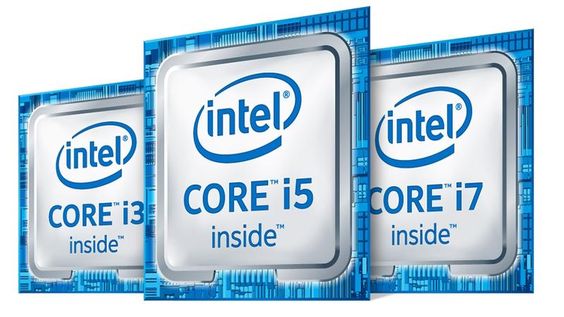Understanding Intel Processors Through the Analogy of Houses
When it comes to choosing the right Intel processor for your computer, it can feel a bit like deciding on the perfect house for your family. Just as the size of your family dictates the size of your home, your computing needs determine the type of processor you should opt for. Let’s explore this analogy to make the decision-making process simpler and more fun!
Intel Celeron: The Bedsitter
Imagine you’re living alone or perhaps with a partner in a cosy bedsitter. It’s small, affordable, and perfect for basic needs. Similarly, the Intel Celeron processor is ideal for simple tasks like browsing the internet, checking emails, and using basic software. It’s cost-effective and gets the job done without any frills.
Intel Pentium: The One-Bedroom House
Now, let’s upgrade to a one-bedroom house. You have a bit more space, maybe a small living room, and it’s comfortable for a couple or a single person who likes a bit more room. The Intel Pentium processor offers a step up in performance, suitable for light multitasking, streaming videos, and running slightly more demanding applications than the Celeron.
Intel Core i3: The Two-Bedroom House
A two-bedroom house is perfect for a small family. There’s enough space for everyone to have their own room, and you can comfortably host a guest or two. The Intel Core i3 processor is similar in that it provides a good balance of performance and affordability. It’s great for everyday computing tasks, light gaming, and running multiple applications without a hitch.
Intel Core i5: The Three-Bedroom House
As your family grows, you might need a three-bedroom house. There’s more space, and you can accommodate more people comfortably. The Intel Core i5 processor is a versatile choice for most users. It handles more intensive tasks like photo editing, moderate gaming, and running several applications simultaneously with ease.
Intel Core i7: The Five-Bedroom Townhouse
A five-bedroom townhouse is spacious and luxurious, perfect for a larger family or those who love having extra room. The Intel Core i7 processor offers high performance for demanding tasks such as video editing, heavy multitasking, and gaming at higher settings. It’s designed for users who need more power and efficiency.
Intel Core i9: The Five-Bedroom Townhouse with a One-Acre Compound
Finally, imagine a five-bedroom townhouse with a sprawling one-acre compound. It’s not just about the house anymore; you need house helps and shamba boys to maintain the property. The Intel Core i9 processor is the powerhouse of processors, designed for extreme performance. It’s perfect for professional-grade tasks like 3D rendering, high-end gaming, and running multiple virtual machines. Just like the large compound requires additional help, a Core i9 system often benefits from additional components like GPUs to handle the workload efficiently.
Intel Core i9: The Five-Bedroom Townhouse with a One-Acre Compound
Finally, imagine a five-bedroom townhouse with a sprawling one-acre compound. It’s not just about the house anymore; you need house helps and shamba boys to maintain the property. The Intel Core i9 processor is the powerhouse of processors, designed for extreme performance. It’s perfect for professional-grade tasks like 3D rendering, high-end gaming, and running multiple virtual machines. Just like the large compound requires additional help, a Core i9 system often benefits from additional components like GPUs to handle the workload efficiently.
Understanding Clock Speed
Clock speed, also known as clock rate, is a measure of how quickly a processor can execute instructions. It’s typically measured in gigahertz (GHz), where 1 GHz equals 1 billion cycles per second. Think of clock speed as the heartbeat of the processor. Each “beat” or cycle allows the processor to perform a certain number of operations. The higher the clock speed, the more cycles per second the processor can complete, and the faster it can process data.
Why is Clock Speed Important?
- Performance: Higher clock speeds generally mean better performance, especially for tasks that require a lot of processing power, like gaming, video editing, and running complex software.
- Responsiveness: A processor with a higher clock speed can handle more instructions per second, making your computer feel more responsive and quicker to execute commands.
While clock speed is important, it’s not the only factor that determines a processor’s performance. Other factors include the number of cores, architecture, and thermal design power (TDP).
Example: More Cores vs. Higher Clock Speed
Imagine you have two processors:
- Processor A: 4 cores with a clock speed of 3.5 GHz.
- Processor B: 8 cores with a clock speed of 2.5 GHz.
Processor A can handle tasks quickly due to its higher clock speed, making it great for single-threaded applications (tasks that run on a single core). However, Processor B, with more cores, can handle multiple tasks simultaneously more efficiently, making it better for multi-threaded applications (tasks that can run on multiple cores).
For example, if you’re running a video editing software that can utilise multiple cores, Processor B will outperform Processor A despite its lower clock speed because it can process more tasks in parallel
Processor speed, on the other hand, refers to the CPU’s overall performance, considering various factors such as clock speed, number of cores, cache size, and architecture. It is a more comprehensive measure of a CPU’s capabilities compared to clock speed alone.
Processor speed is often measured in terms of instructions per second (IPS) or floating-point operations per second (FLOPS). It provides a more accurate representation of a CPU’s performance as it considers not only the clock speed but also the efficiency of the architecture and the ability to handle complex calculations.
Modern CPUs are designed to optimize performance by balancing clock speed, core count, cache size, and other factors. This means that a CPU with a lower clock speed but more cores and a larger cache can often outperform a CPU with a higher clock speed but fewer cores and a smaller cache.
Why Choose the Latest Processors?
Just as you wouldn’t want to buy a house with outdated plumbing or wiring, it’s wise to invest in the latest Intel processors. Here are a few reasons why discontinued processors are not ideal:
Performance Improvements:
Each new generation of Intel processors brings significant performance enhancements. For example, the leap from the 8th to the 10th generation saw improvements in processing speed and efficiency, making tasks faster and smoother.
Power Consumption:
Newer processors are designed to be more energy-efficient. This means they consume less power, generate less heat, and can extend the battery life of laptops. For instance, the 11th-generation Intel processors introduced better power management features compared to their predecessors.
Security Enhancements:
With each new generation, Intel addresses security vulnerabilities and introduces new security features. Older processors may be more susceptible to security flaws that have been patched in newer models. For example, the Spectre and Meltdown vulnerabilities highlighted the importance of keeping hardware up-to-date.
Just like you can rent a home, your business can lease devices through the TechLease service from KEKA Precision Technologies. Leasing offers several benefits:
Cost-Effective:
Avoid the high upfront costs of purchasing new equipment.
Flexibility:
Upgrade to the latest technology without the hassle of selling old devices.
Maintenance:
Enjoy peace of mind with included maintenance and support services.
Leasing allows you to have the ideal setup for your needs without the long-term commitment of ownership, much like renting the perfect home.
Press on the Windows key ![]() on your keyboard and start typing System, choose System Information which will show Processor information with the name, number, and speed of the processor.
on your keyboard and start typing System, choose System Information which will show Processor information with the name, number, and speed of the processor.
If the Windows key is not available on your keyboard, use your mouse, go to the Windows icon located on the bottom-left corner of your screen, right-click, and choose System. Look up the processor’s name and number in the Processor information.
You can also identify the generation of the processor if your processor is Intel® Core™. The generation of the processor is the first number after i9, i7, i5, or i3.
Here are some examples:
- Intel® Core™ Processor i9-14900HX Processor is 14th generation because the number 14 is listed after i9.
- Intel® Core™ Processor i7-13700K Processor is 13th generation because the number 13 is listed after i7.
- Intel® Core™ Processor i9-12900HX Processor is 12th generation because the number 12 is listed after i9.
- Intel® Core™ Processor i7-10710U Processor is 10th generation because the number 10 is listed after i7.
- Intel® Core™ Processor i5-11600KF Processor is 11th generation because the number 11 is listed after i5.
- Intel® Core™ Processor i7-9850H Processor is 9th generation because the number 9 is listed after i7.
If you need more information about any Intel® processor, use the Product Specification Page (ARK) and enter the processor number in the search box.



